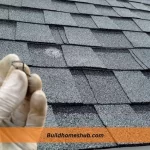Roofing felt, also known as tar paper, is an essential component of roofing systems, as it provides a barrier against water and moisture. Proper installation of roofing felt is essential to ensure its longevity and effectiveness. This is where the role of staples comes in.
In this article, we will delve into the importance of staples in roofing felt and the various factors that must be considered when choosing the right staples for your roofing project. We will explain why staples play a critical role in roofing felt installation and provide expert tips on choosing the best staples for your roof. Discover the factors to consider when selecting roofing staples, including material, length, gauge, and compatibility.
What are Roofing Staples?
Roofing staples are small, pointed metal fasteners used to secure roofing felt to the roof deck. They come in various lengths and gauges to accommodate different roofing materials and types.
Factors to Consider when Choosing Roofing Staples
When choosing roofing staples, it is essential to consider the following factors:
1. Material
Roofing staples are made from various materials, including aluminum, galvanized steel, and stainless steel. The material you choose will depend on the type of roofing system you have and the local climate conditions.
2. Length
The staples should be long enough to penetrate through the roofing felt and into the roof deck for maximum holding power.
3. Gauge
The gauge of the staples refers to their thickness. Thicker staples offer more holding power but require more effort to drive into the roof deck.
4. Compatibility
It is essential to choose staples that are compatible with your roofing felt and roofing system.
Materials Used to Make Roofing Staples
Roofing staples are typically made from various materials, including aluminum, galvanized steel, and stainless steel. Each material offers different advantages and disadvantages and is best suited to different roofing systems and climate conditions.
1. Aluminum
Aluminum roofing staples are lightweight, corrosion-resistant, and do not rust. They are best suited for roofing systems exposed to high moisture or salt levels, such as coastal areas.
2. Galvanized steel
Galvanized steel roofing staples are made by coating the steel with a layer of zinc, which protects it from rust and corrosion. They are an economical choice for roofing systems and are best suited for areas with moderate climates and low moisture levels.
3. Galvanized steel
Stainless steel roofing staples are made from high-quality steel and are highly resistant to rust and corrosion. They are best suited for roofing systems exposed to extreme weather conditions and high moisture levels. They are also suitable for roofing systems that require high durability and longevity, such as commercial and industrial roofs.
How to Staple Roofing Felt
Here are the steps for stapling roofing felt to a roof deck:
- Prepare the Roof Deck: Clean the roof deck to remove debris and ensure a smooth surface for the roofing felt.
- Lay the Roofing Felt: Unroll the roofing felt and lay it on the roof deck, starting at the eave and working your way up to the ridge.
- Secure the Roofing Felt: Use a staple gun to secure the roofing felt to the roof deck. Make sure to drive the staples through the felt and into the roof deck for maximum holding power.
- Overlap the Seams: Make sure to overlap the roofing seams felt by at least 2 inches to prevent water from seeping through the joints.
- Continue the Installation: Lay the roofing felt and secure it with staples until the entire roof is covered.
Follow these steps carefully and use the correct type and length of staples to ensure a successful installation. Also, it is recommended to wear safety gear and follow proper safety precautions when installing the roofing felt.
What Length Staples for Roofing Felt
The recommended staple length for securing roofing felt to a roof deck varies based on the thickness of the roofing felt. Typically, 1/4 inch staples are used for 15-pound roofing felt, while 3/8 inch staples are used for 30-pound.
It is important to use the correct length staples to securely penetrate the roofing felt and the roof deck for a strong hold. Using the wrong length of staples could result in the roofing feeling lifting or coming loose, which could lead to water damage or other problems.
When in doubt, it is always best to consult a roofing professional or the roofing manufacturer to determine the proper staple length.
Different Types of Roofing Felt: Thickness/Weight
There are two main types of roofing felt: organic and fiberglass. Organic felt is made from a base of paper or cellulose that is saturated with asphalt. Fiberglass felt is made from fiberglass matting that is coated with asphalt. The thickness and weight of the felt will impact the staple length and number used during installation.
For organic felt, the thickness is measured in pounds per square, with the most common weights being 15-pound and 30-pound felt. 15-pound felt is thinner and lighter, while 30-pound felt is thicker and heavier. The felt thickness will impact the staple length required for secure installation. Typically, 1/4 inch staples are used for 15-pound felt, while 3/8 inch staples are used for 30-pound felt.
For fiberglass felt, the thickness is typically expressed in millimeters. The staple length will depend on the thickness of the felt, the weight of the roof deck, and the local building code requirements. It is essential to consult with a roofing professional or the manufacturer of the felt to determine the proper staple length.
How Many Staples Per 100 Square Foot of Roof Felt Should I Use
The number of staples required per 100 square feet of roofing felt can vary based on the thickness and weight of the roofing felt, the type of roof deck and the local building code requirements. As a general guideline, it is recommended to use between 300 to 400 staples per 100 square feet of roofing felt.
It is important to keep in mind that the number of staples is not the only factor in ensuring successful roofing felt installation. Proper overlap of the seams, correct staple placement, and using the correct length of staples are all important factors to consider.
For a more accurate estimate of the number of staples required for your specific roofing project, it is best to consult with a roofing professional or the manufacturer of the roofing felt.
Safety Precautions That Should Be Taken When Installing Roofing Felt
Installing roofing felt can be a dangerous task requiring proper safety precautions. Here are a few tips to ensure a safe and successful installation:
- Wear protective gear: It is important to wear protective gear such as gloves, eye protection, and a hard hat when installing the roofing felt to protect against cuts, scrapes, and falling debris.
- Use proper equipment: Use the correct tools and equipment, such as a staple gun and a ladder, to ensure a safe installation.
- Secure the ladder: When using a ladder, make sure to secure it on a stable surface and ensure that it is positioned at the correct angle.
- Avoid working alone: If possible, it is recommended to work with a partner when installing the roofing felt to ensure that someone is always on the ground to spot you in an emergency.
- Stay aware of weather conditions: Avoid installing the roofing felt during inclement weather such as high winds or rain.
- Keep the workspace clear: Make sure to keep the workspace clear of any debris or obstacles that may cause you to trip or fall.
- Follow manufacturer instructions: Read the manufacturer’s instructions carefully and follow them closely to ensure a safe and successful installation.
Final Thoughts
Staples play a crucial role in installing roofing felt and are essential for providing a watertight barrier that protects your home from water damage. Considering the factors discussed in this article, you can choose the right staples for your roofing project and ensure a successful installation.
I like to think I can help you with all the information you need on home renovations and DIY tips. You should subscribe.











